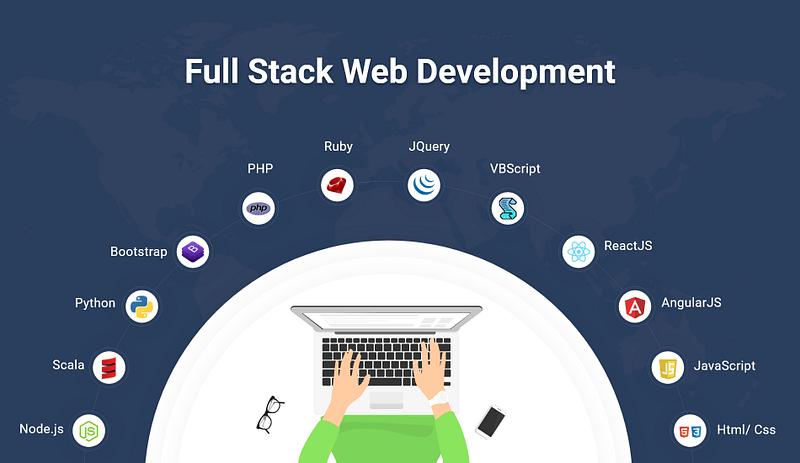
The term “full-stack framework” isn’t strictly accurate because most frameworks specialize in either the front-end (user interface) or the back-end (server-side logic) of web development. However, there are combinations of front-end and back-end frameworks that work well together for full-stack development in 2024. Here are some popular options:
1. MERN Stack:
- Front-end: React (JavaScript library)
- Back-end: Node.js (JavaScript runtime environment)
- Database: MongoDB (NoSQL database)
- Additional Tools: Express.js (web framework for Node.js)
Pros:
- Widely used and popular, leading to a large community and plenty of resources.
- JavaScript all the way, making full-stack development more manageable for developers already familiar with the language.
- Scalable and efficient for real-time applications.
Cons:
- Requires knowledge of several different technologies.
- May not be ideal for complex data structures or relational databases.
2. LAMP Stack:
- Front-end: HTML, CSS, Javascript (various libraries and frameworks)
- Back-end: PHP (server-side scripting language)
- Database: MySQL (relational database)
- Server: Linux (operating system)
Pros:
- Mature and well-established stack, used for countless websites.
- Open-source and free to apply, making it cost-effective.
- Strong community support and extensive learning resources available.
Cons:
- Can be complex to set up and manage compared to modern options.
- PHP might not be the most performant choice for demanding applications.
3. MEAN Stack:
- Front-end: Angular (JavaScript framework)
- Back-end: Node.js (JavaScript runtime environment)
- Database: MongoDB (NoSQL database)
- Additional Tools: Express.js (web framework for Node.js)
Pros:
- Similar to MERN, but uses Angular instead of React, which could be a better fit for larger, complex applications.
- Offers powerful features and structure for building scalable applications.
- Leveraging JavaScript throughout simplifies development for familiar developers.
Cons:
- Requires knowledge of several different technologies.
- Learning curve might be steeper compared to MERN due to Angular’s complexity.
4. Ruby on Rails:
- Front-end: HTML, CSS, Javascript (various libraries and frameworks)
- Back-end: Ruby on Rails (full-stack framework)
- Database: PostgreSQL (relational database)
Pros:
- “Convention over configuration” approach promotes rapid development.
- Strong community and extensive resources available.
- Well-suited for making web applications fastly and efficiently.
Cons:
- Less popular compared to the other stacks, potentially leading to fewer resources and talent.
- Ruby itself might have a smaller talent pool compared to other languages.
Choosing the Right Full-Stack Framework:
The best full-stack approach depends on your project’s specific needs, team skillset, and desired features. Consider factors like:
- Project complexity and size.
- Developer experience and preferred languages.
- Performance and scalability requirements.
- Database needs (relational vs. NoSQL).
- Community support and available resources.
Researching each stack and evaluating your project’s requirements will help you choose the most suitable combination of technologies for your full-stack development in 2024.
Say goodbye to the hassles of bike ownership! MotoShare.in offers affordable rentals, whether you need a scooter for errands, a bike for a road trip, or a reliable ride to explore new cities.

 Starting: 1st of Every Month
Starting: 1st of Every Month  +91 8409492687
+91 8409492687  Contact@DevOpsSchool.com
Contact@DevOpsSchool.com
